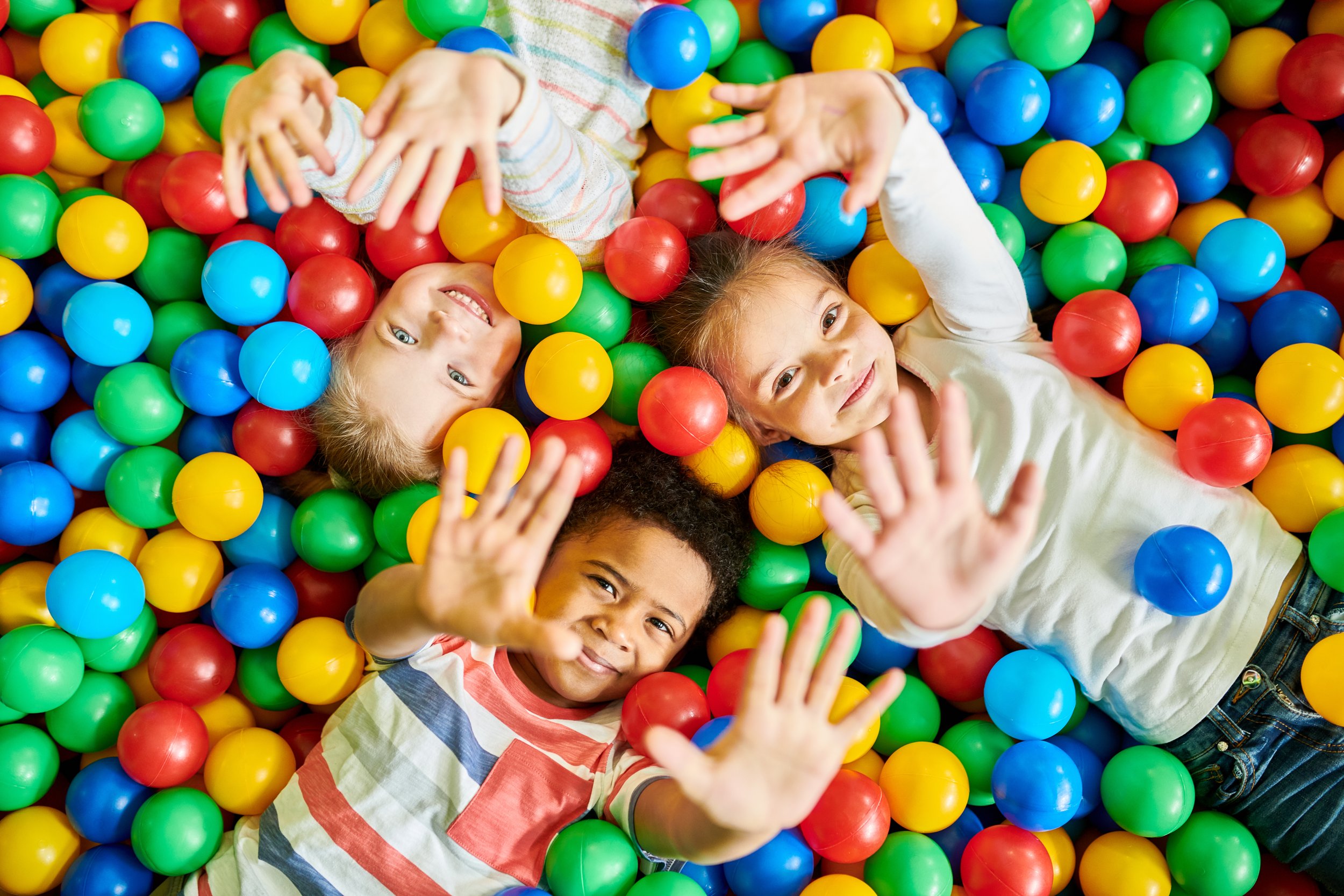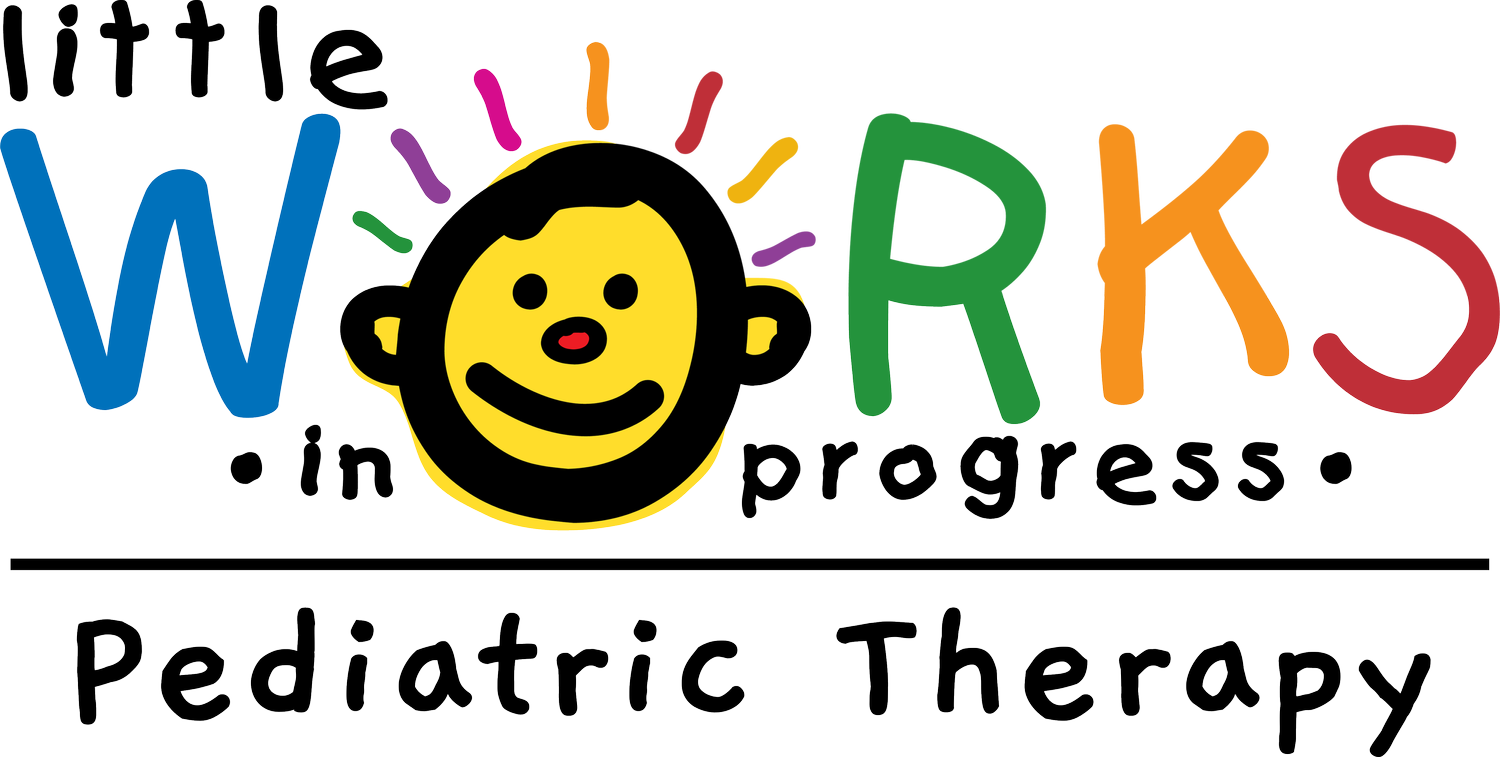
Milestones
GROSS / FINE MOTOR
-
Moves mouth to source of stimulation (nipple/breast)
Takes toy to mouth
Hold rattle for extended periods of time
Stands firmly when held
Sits supported for short periods of time (3-5 months)
Able to bear weight on forearms
Reaches for and holds objects
Able to bear weight through elbows while on tummy
-
Supports self in sitting
Takes feet to mouth
Takes hands to feet
Able to rotate upper body independently of lower body
May pull to stand at furniture
Protective response when falling forward
Picks up small objects with several fingers and thumb
Transfers objects from hand to hand
Drops one toy when given another
Gets to sitting from lying down
-
Crawls well
Has wide variety of sitting positions
Stands holding on
Cruises around furniture turning slightly in intended direction
Can hold small object between thumb and index finger
Points with index finger
Walks with one hand held
-
Imitates scribble
Builds two to five block tower
Squeezes toys
Enjoys walking activities and pulling toys
Throws and picks up objects
By 13 months, walks a few steps without support
By 18 months, walks with no support
Likes to climb
Seats self in small chair
Creeps up stairs on hands and knees
Holds crayon in fist, thumb up
Precise controlled release
-
Pushes a stroller or a cart
Runs
Squats to play
Walks upstairs one at a time; not alternating feet
Jumps off floor with both feet
Snips paper with scissors
Strings two or three beads
Crawls backward down stairs
-
Runs with whole foot contact
Jumps over objects
Throws ball while standing, without falling
Catches ball from straight arm position
Pulls pants off and on
Rides tricycle
Walks up and down stairs with alternating feet
Swings and climbs
Hops on one foot
Balances on one foot for 10 seconds
Can build blocks horizontally and vertically
Draws a circle and a cross
Can cut through a sheet of paper and beginning to cut on a line, moving towards a grasp with thumb pointed down to paper
-
Gallops and skips
Completes 3 sit ups
Draws square
Cuts out circle and square
Grasps marker between thumb and pad of index finger
Touches each finger to thumb
Colors between vertical lines
Can efficiently cut out a circle and begins to cut out more complex shapes, grasps crayons with fingertips
-
Maintains balance and rhythm using opposing arm and leg movements
Skips 10 feet
Hops on one foot 20 feet without losing balance
Completes 5 sit ups
Performs 8 push ups
Bounces and catches small ball
Can efficiency cut out squares, can draw a triangle, grasps pencil with tips of thumb, pointer, and middle finger
SELF HELP & ORAL MOTOR
-
Sucks well
Makes sucking sounds
Tongue moves up and down, in and out
Mouth opens for food (3-5 months)
Tongue thrusts when the spoon is withdrawn, food is spit out (3-5 months)
Begins eating cereals, fruits, and juices (3-5 months)
-
Can drink slowly with cup but cannot control flow with tongue
Jaws move up and down
Upper lip comes down well on spoon
Lifts cup with handle
Eats dry cereal, meats, vegetables, fruits with fingers
Holds, bites, chews food
-
Drinks well from a cup
Enjoys some solid food
Feeds self finger foods
Takes off shoes and socks
Cooperates in dressing
Stops drooling
-
Full precise use of cup, no chokes, few drips
Begins independent use of spoon
Chews most foods well
Brushes teeth with assistance
Combs or brushes hair
Puts socks on
Shows wet or soiled pants
Moves about house with adults
Unzips zipper
Gets into adult chair unaided
-
Pushes a stroller or a cart
Runs
Squats to play
Walks upstairs one at a time; not alternating feet
Jumps off floor with both feet
Snips paper with scissors
Strings two or three beads
Crawls backward down stairs
-
Wipes hands and face
Chooses toys selectively
Recognizes family members names
Asks for help with personal needs
Acts out familiar routines
Points to more difficult body parts (elbow, knee)
Unbuttons large buttons
Dries own hands
Pours well from half-full pitcher
Puts on shoes without tying
Undresses completely without help by 36 months
Unbuttons front buttons by 36 months
-
Independently fastens seatbelt
Zippers efficiently
Laces shoes
Serves self at table (parent holding serving dish)
Takes cares of own toileting needs
Dresses and undresses independently; requires assistance with ties and back fastenings
Combs or brushes hair
Uses table knife for spreading butter, jelly, or peanut butter
-
Makes simple breakfast and lunch
Sets and clears table without assistance
Ties initial knot in shoelace
Selects clothing appropriate for temperature and occasion
Has complete independence in bathing
Plans ahead to meet toileting needs before beginning an activity
COMMUNICATION
-
Reacts to loud sounds
Turns head toward a sound source
Watches your face when you speak
Vocalizes pleasure and displeasure sounds (laughs, giggles, cries, or fusses)
Makes noise when talked to
Repeats the same sound
Uses a different cry to indicate different needs
Uses the phonemes: “b“, “p” and “m” in babbling
-
Understands “no-no”
Babbles (says “ba-ba-ba” or “ma-ma-ma”)
Tries to communicate by actions or gestures
Uses speech sounds rather than only crying to get attention
Responds to simple requests
Responds to own name
Recognizes words for common items
Uses a large variety of sounds when babbling
Uses sound approximations
Imitates some adult speech and intonation patterns
Uses nouns almost exclusively
Has an expressive vocabulary of 3-5 words
Understands simple commands
-
Attends to a book or toy for about two minutes
Follows simple directions accompanied by gestures
Answers simple directions accompanied by gestures
Answers simple questions nonverbally
Points to objects, pictures, and family members
Makes request for more of desired item
Omits some initial consonants and almost all final consonants
Produces mostly unintelligible speech
Receptively identifies 1-3 body parts
Follows simple commands
Has an expressive vocabulary of 5-20 words or more (mostly nouns)
Combines gesture and vocalization
-
Follows simple commands without gestures
Points to simple body parts such as “nose”
Understands simple verbs such as “eat”, “sleep”
Correctly pronounces most vowels and “n, m, p, h“, especially in the beginning of syllables and short words. Also begins to use other speech sounds.
Asks for common foods by name
Makes animal sounds such as “moo”.
Starting to combine words such as “more milk”.
Has an expressive vocabulary of 50-100 or more words
Has a receptive vocabulary of 300 or more words
Starts to combine nouns and verbs
Begins to use pronouns
Maintains unstable voice control
Answers “What’s that?” questions
Enjoys listening to stories
Is approximately 25-50% intelligible to strangers
-
Knows about 50 words at 24 months
Knows some spatial concepts such as “in” and “on”
Knows pronouns such as “you”, “me”, and “her”
Knows descriptive words such as “big” and “happy”
Speech is 80% intelligible by 3 years
Understands one and all
Verbalizes toilet needs
Requests items by name
Identifies several body parts
Asks 1 to 2 word questions
Uses 4 to 5 word phrases
Has an expressive vocabulary of 500 or more words
Has a receptive vocabulary of 500-900 or more words
Uses approximately 27 phonemes
Mastered the following sounds: p, b, t, d, k, g, f, m, ng, n, w, h
Answers simple questions
Begins to use more pronouns such as “you” and “I”
Speaks in two to three word phrases
Uses question inflection to ask for something (e.g., “My ball?”)
Begins to use plurals such as “shoes” or “socks” and regular past tense verbs such as “jumped”
-
Groups objects such as foods, clothes, etc.
Identifies colors
Uses most speech sounds but may distort some of the more difficult sounds such as I, r, s, sh, ch, y, v, z, th. These sounds may not be mastered until age 7 or 8.
Uses consonants in the beginning, middle, and end of words. Some of the more difficult consonants may be distorted, but attempts to say them.
Able to describe the use of objects such as “fork”, “car”, etc.
Has fun with language. Enjoys poems and recognizes language absurdities such as, “Is that an elephant on your head?”
Expresses ideas and feelings rather than just talking about the world around him or her
Uses verbs that end in “ing”, such as “walking”, “talking”
Answers simple questions such as “What do you do when you are hungry?”
Repeats sentences
Follows 2 and 3 step commands
Asks and answers simple questions
Uses 5-7 words in sentences
Has 1800-2000 word receptive vocabulary
Uses 1200-1500 or more spoken words by 4 years
Speech is 90% intelligible
Masters 50% of consonants and blends
Appropriately uses “is”, “are”, and “am” in sentences
Tells 2 events in chronological order
Uses some contractions irregular plurals, future tense verbs and, conjunctions
-
Understands spatial concepts such as “behind” and “next to”
Understands complex questions
Speech is understandable but makes mistakes pronouncing long, difficult, or complex words such as “hippopotamus”
Describes how to do things such as painting a picture
Defines words
Lists items that belong in a category such as animals, vehicles, etc.
Answers “why” questions
Understands concept of numbers up to 3
Recognizes 3-4 colors
Counts to 10 by rote
Has receptive vocabulary of 2500-3500 words
Listens to short, simple stories
Uses sentences of 6-8 words
Has an expressive vocabulary of 2000 or more words
Enjoys rhymes
-
Understands time sequences (what happened first, second, third, etc…)
Carries out a series of three directions
Understands rhyming
Engages in conversation
Sentences can be 8 or more words in length
Uses compound and complex sentences
Describes objects
Uses imagination to create stories
Uses past tense and future tense appropriately
Names opposites
Has a receptive vocabulary of 13,000 words
Counts to 30 by rote
Uses conjunctions
Sequentially names days of the weeks
VISUAL PERCEPTION PRE-WRITING AND WRITING MILESTONES
-
Scribbling
-
Imitating vertical and horizontal lines
-
Drawing a circle and cross shape with intersecting lines
-
Can draw a square with 4 corners, starting to imitate diagonal lines and triangles
-
Drawing people with bodies and correctly oriented arms, imitating triangles
-
Can learn to write numbers, starting to recognize letters of name, and able to recognize letters learned from curriculum
-
Can copy a simple sentence on 1 inch lines with enough space between words to read the sentence
-
No longer writes with letter reversals and can write a sentence with space between words and letters on the line
-
By third grade, can typically copy at a rate of 7-10 words per minute

